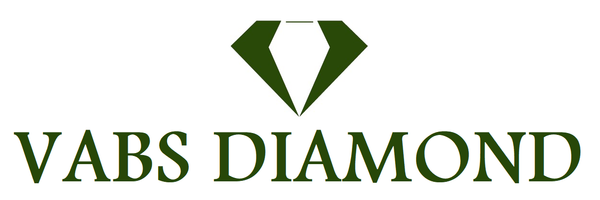Diamonds have long captivated hearts with their brilliance and timeless elegance. At VABS Diamond, we celebrate this tradition by offering ethically-sourced, lab-grown diamonds that bring everyday luxury within reach. But when choosing a diamond, understanding its qualities becomes crucial. Today, we'll delve into the world of diamond clarity, a key factor impacting a diamond's beauty and value.
Demystifying Diamond Clarity
The Gemological Institute of America (GIA) established the diamond clarity scale, a standardized system grading a diamond's internal flaws (inclusions) and external blemishes. These imperfections can affect a diamond's light performance and brilliance. The GIA scale ranges from:

- FL (Flawless): Internally flawless, no inclusions visible under 10x magnification.
- IF (Internally Flawless): No inclusions visible under 10x magnification, may have minor surface blemishes.
- VVS1/VVS2 (Very Very Slightly Included): Extremely minor inclusions difficult to see even by a trained professional under 10x magnification.
- VS1/VS2 (Very Slightly Included): Minor inclusions, usually undetectable to the naked eye.
- SI1/SI2 (Slightly Included): Slight inclusions noticeable only under close inspection with a loupe (10x magnification).
- I1/I2 (Included): Noticeable inclusions visible under 10x magnification, some might be visible to the naked eye but may not affect brilliance significantly.
- I3 (Included):Noticeable inclusions visible without 10x magnification, its visible to the naked eye.
Explore Our Best Grading Diamonds
Clarity's Impact on Beauty & Value
Diamond clarity plays a role in a diamond's fire (play of light colors) and brilliance (overall light reflection). Generally, higher clarity grades translate to higher brilliance and value. However, it's important to remember that inclusions become invisible to the naked eye as the clarity grades move down the scale (VS2 and above). This means you can often find a beautiful, sparkling lab-grown diamond at a more accessible price point by considering a slightly lower clarity grade.
The Ethical and Sustainable Choice

Since lab-grown diamonds are created in a controlled environment, they often exhibit fewer inclusions compared to mined diamonds. This allows you to find a truly eye-clean diamond that sparkles brilliantly, while also making a conscious choice for the environment.
Finding the Perfect Clarity for You
Choosing the ideal diamond clarity depends on several factors:
- Budget: Higher clarity diamonds come at a premium.
- Viewing Preference: If you plan to view the diamond under magnification, clarity becomes more important. For the naked eye, VS2 and above are excellent choices.
- Occasion: An everyday diamond necklace might allow for a slightly lower clarity grade compared to a center stone for an engagement ring.
The concept of "eye-clean" diamonds comes into play here. An eye-clean diamond has inclusions invisible to the naked eye, even under close inspection. This makes it a great option to balance beauty and value, especially when considering lab-grown diamonds that tend to have fewer inclusions.
VABS Diamond Expertise
At VABS Diamond, we are committed to offering high-quality, ethically sourced lab-grown diamonds that sparkle with brilliance. Our gemologists meticulously select each diamond, ensuring exceptional clarity and beauty for every piece.
Want to find the perfect lab-grown diamond that complements your style and budget? Schedule a free consultation with one of our gemologists. They'll guide you through the diamond clarity scale and help you discover the ideal stone for your special occasion.
Conclusion
Understanding diamond clarity empowers you to make informed decisions when choosing a lab-grown diamond. We hope this guide has unveiled the sparkle behind diamond clarity. Explore VABS Diamond's exquisite collection of lab-grown diamonds and discover a world of brilliance with a conscience. Contact us today to embark on your sustainable diamond journey.



